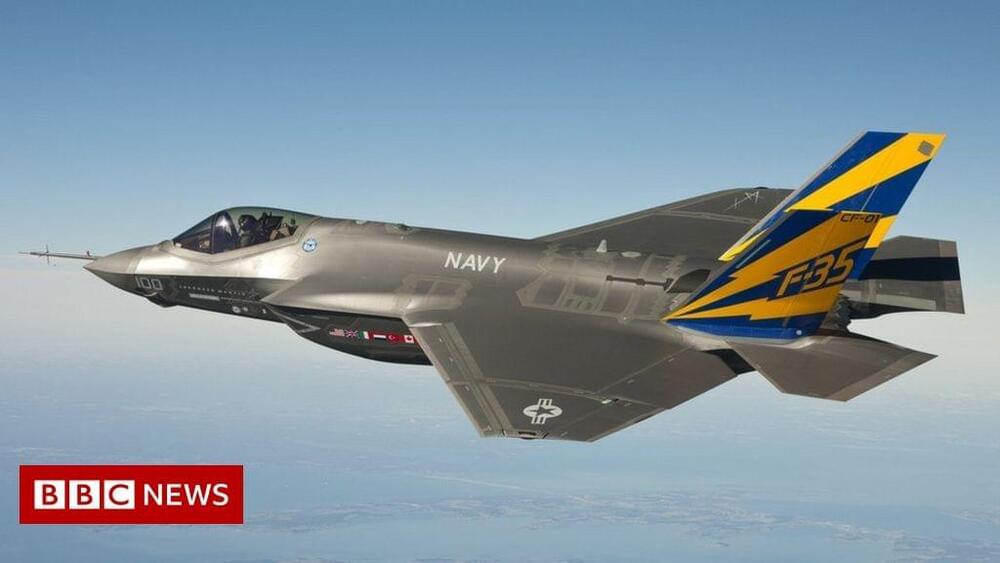The $100m jet is fair game, in international waters. “It’s the Hunt for Red October meets The Abyss.”



The US officials were left stunned when a Financial Times report revealed that Beijing had tested a nuclear-capable hypersonic missile in August last year. The test demonstrated that China has now garnered the ability to strike any point of earth in no time and that too without letting the target know about any such imminent attack. This bold portrayal of the hypersonic program had dumbstruck the US, whose own hypersonic program runs far behind that of China.
Top Chinese scientist loaded with crucial data defects to the US
However, what has now come as a blessing in disguise for America is the defection of a top Chinese scientist to the West. A report published by Daily Express revealed that a senior rocket technician, connected to the state-owned Aviation Industry Corp of China, recently defected to the US with the help of the UK’s top intelligence agency.
© All Right Reserved Military Technology 2022.
Theme Trend News By WP News Theme
A standard feature on its Model S, Model X, and Model Ys since 2016.
As Tesla explains in the description accompanying the video, it uses highly efficient particulate air (HEPA) filters in its car models S, X, and Y. The air filtration system removes more than 99 percent of particulates and is something we also saw in some other EV concepts last year.
To demonstrate the efficiency of the filters in its car, Tesla engineers blew up a large bubble and filled up the interiors with smoke from smoke bombs. For comparison, they also put a BMW X3, without a HEPA filter, inside the bubble. Musk confirms the Cybertruck is delayed until 2023.
🔔 Subscribe now for more Artificial Intelligence news, Data science news, Machine Learning news and more.
🦾 Support us NOW so we can create more videos: https://www.youtube.com/channel/UCItylrp-EOkBwsUT7c_Xkxg.
The United States military has a long record of being at the forefront of humankind’s technological achievements. For example, it was the U.S. Navy in the 1940s, led by Admiral Rickover, who pioneered the use of nuclear power as a propulsion device, and that eventually led to nuclear power plants for civilian use. Today, the military again leads the charge into the future with their innovations in robotics and their many applications across the entire infrastructure of the organization. We will talk about MAARS, Robobee, DOGO, SAFFiR and Gladiator!
#bostondynamics #bostondynamicsrobot #robotics.
📺 Fun fact: Smart people watch the entire video!
🤖 AI News Daily provides the latest Artificial Intelligence news and trends. Explore industry research and reports from the frontline of AI technology news.

“Entanglement forging essentially enables you to cut up a larger circuit into smaller circuits that we can execute on smaller hardware,” IBM Quantum platform lead Blake Johnson said in a statement.
“Smaller circuits aren’t just easier to execute. They’re also able to tolerate a lot more noise just by virtue of being smaller.”
Meanwhile, progress continues on enlarging quantum systems. IBM’s 27-qubit Falcon processor dates from 2019, and has since been surpassed by larger systems, including IBM’s own 127-qubit Eagle last year. As detailed at the time, IBM intends to use that design to scale to a 433-qubit processor called Osprey this year, and a 1,121-qubit processed called Condor in 2023.
What would happen if a nuclear bomb 100 times the size of the one dropped on Hiroshima hit a city of 4 million people?
#Engineering
The impact of a nuclear bomb dropped in a big city has been simulated by Neil Halloran and the Nobel Peace Prize committee. Watch the video to see it.
👉For business inquiries: [email protected].
✅ Instagram: https://www.instagram.com/pro_robots.
https://www.youtube.com/watch?v=xppMgm2buuM
You are on the PRO Robots channel and in this video we present to your attention the news of high technology. Robots and technology for the military, Elon Musk’s tower, a new humanoid robot, new drones of unusual designs and robots for various tasks. See all the most interesting technology news in one issue! Watch the video to the end and write in the comments, which news surprised you more than others?
0:00 In this video.
0:20 Robot for garbage sorting.
0:52 Jet Suit from Gravity Industries.
1:45 SpaceX’s Mechazilla Tower.
2:15 HB1 Robot from HausBots.
2:50 Roboto from Nuro.
3:19 Alfred Robot arm.
4:15 HiPeRLab quadcopter.
4:51 ADAM Robot Barista.
5:20 Tocabi humanoid.
5:59 Warehouse robot Spider-Go.
6:43 Combination of drone and underwater robot.
7:17 Robot rover Brawler.
7:48 Stretch by Boston Dynamics.
8:31 Katy Perry shot a music video with Spot.
8:48 Robo C-2
9:20 Marker military robot.
#prorobots #robots #robot #futuretechnologies #robotics.
More interesting and useful content:


China has developed the world’s largest electrically-powered quadruped bionic robot to assist the military on logistics and reconnaissance missions. This comes as the latest in China’s push to become a global leader in robotics by 2025 and also, of course, in military tech.
Walking on four legs and boasting a yak-like appearance, the robot is not only huge but powerful, smart, and surprisingly agile. It can move forward and backward and can perform a series of unexpected movements, such as jumping, running, turning, or walking diagonally.
This mechanical beast is strong enough to carry up to 350 pounds (160 kg) and can sprint at 6 mph (10 km/h). The robot is more than half the height of an adult when walking, and its length is about twice its height. Thanks to an unconscionable 12 sets of joint modules, it even sprints and dashes and jumps high without losing its footing.